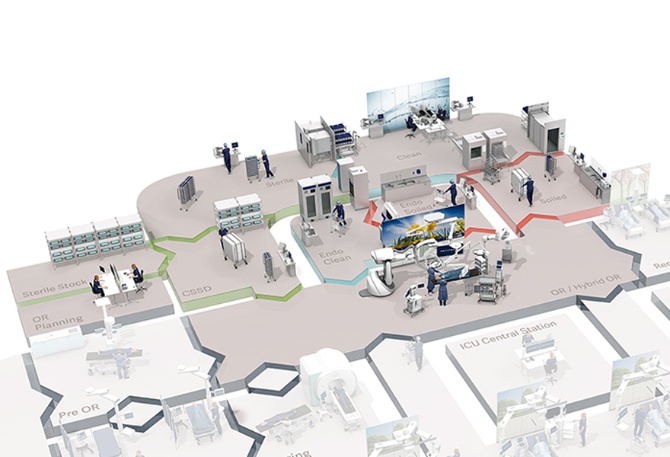Infection control and reprocessing within healthcare
Every year, hundreds of millions of patients are affected by a healthcare associated infection (HCAI, HAI or nosocomial infection) worldwide.
A healthcare associated infection is an infection which patients acquire during their stay at a hospital or other healthcare facility, which was not present or incubated at the time of admission. In the western world, about 8% of the patients admitted to a hospital acquire an infection, in developing countries it is even more.
What causes infections?
Infections are caused by different microorganisms that are very common within our environment. Most of them are harmless or even good for the human being, but patients within healthcare are usually more likely to get an infection from the harmful ones due to underlying illness and/or other factors that has weakened the patient’s immune system.
Bacteria
Bacteria multiply by splitting and can be either non-pathogenic (harmless) or pathogenic (causing infectious diseases). Some bacteria can form highly resistant endospores which can only be deactivated or killed during sterilization. Bacteria cause infectious diseases such as Cholera, Anthrax, Leprosy, Bubonic plague, Sepsis and MRSA.
Virus
Virus is simply constructed and isn’t classified as a complete cell. For the virus to multiply it requires another cell that the virus infects. With help from the infected cell’s DNA or RNA the virus can split and multiply. Viruses can cause viral infections such as the common cold, Rabies, Smallpox, Measles, HIV, Polio, SARS and Influenza.
Microscopic fungi
Microscopic fungi are more developed then bacteria and viruses. They are around 20 times larger than bacteria. Most pathogenic fungi require a large number to be able to cause an infection, and often it is required that the person’s immune system is weakened. Candidiasis is a number of fungal infections due to a type of yeast called Candida. Candida causes for example Thrush, yeast infections in the genital area and Onychomycosis.
Protozoa
Protozoa is a single-celled organism with an animal-like behavior and one of the microorganisms that is most highly developed. Protozoa causes diseases such as Malaria, Cryptosporidiosis and Sleeping Sickness.
Prions
Prions are infectious particles, which consist of only protein. Prion diseases are caused by a protein adopting an incorrect form, it then serves as a template when it enters healthy protein and changes it in order to reproduce. Prions are very hard to deactivate and WHO recommends combining at least two prion inactivation methods (cleaning and sterilization). Prions cause Mad Cow Disease (BSE); when humans are infected it’s called variant Creutzfeldt-Jakob disease.
The barrier principle
The goal of infection control is to reduce the number of causative agents.
Getinge promotes the 3 zones - 2 barriers concept whenever possible. First barrier avoids cross-contamination of goods spread by staff, and the second barrier avoids mixing up clean and sterile goods.

The zones are separated by pass-through washer-disinfectors and sterilizers. Unclean items arrive at the reception area in the same instrument trays, baskets and containers as they were delivered in. After visual inspection, items are either loaded into the pass-through washer-disinfectors or manually cleaned by soaking, and then put into the washer-disinfector.
The clean and disinfected goods entering the area for sorting, inspection and packing are unloaded. Once sorted, inspected and packaged, the goods are ready for sterile reprocessing. Upon sterilization the goods are stored on racks or in trolleys for further transport within the hospital.
Learn more about the 3 zones of infection control
Cleaning
Cleaning is considered the most important step in the reprocessing process of an instrument or equipment. The purpose of cleaning is to remove visible soil and reduce biological matter and to prepare it for the disinfection process.
Disinfection
The disinfection process reduces the number of pathogenic microorganisms on the instruments significantly by removing and/or killing them. Bacterial spores are not necessarily killed by disinfection; however the number may be reduced as a result of the cleaning process.
Sterilization
Sterilization involves the complete destruction of all forms of microbial life, including bacteria, viruses and spores. To be effective, sterilization must be preceded by cleaning, the removal of all foreign material from the item, and disinfection, the reduction of pathogen microorganisms to a level that is not harmful for the health.
Follow the WHO standards
The aim of the manual "Decontamination and reprocessing of medical devices for health-care facilities" is to provide guidance in improving standards in sterile services across healthcare facilities worldwide.
